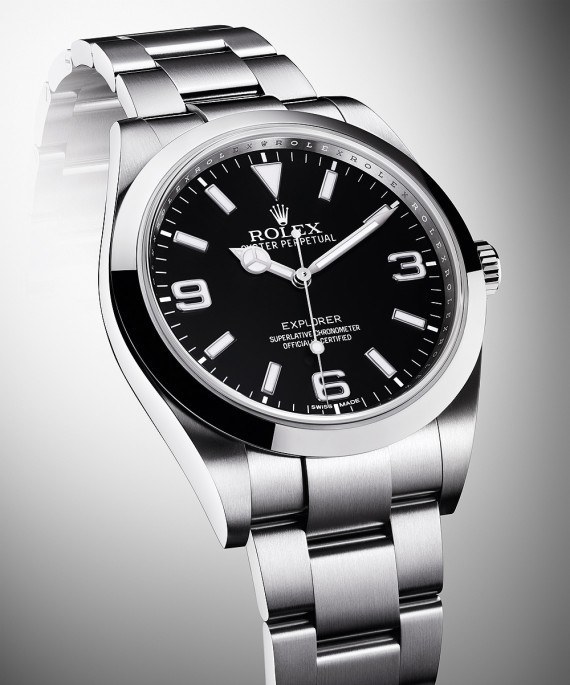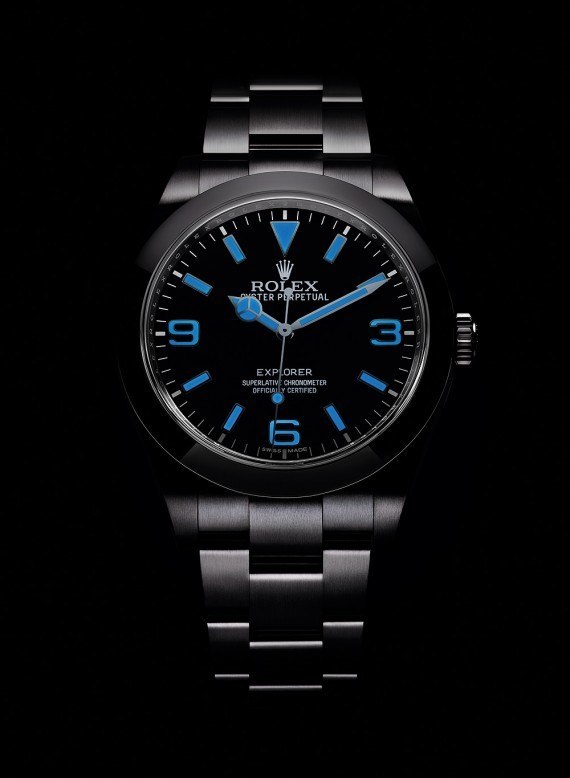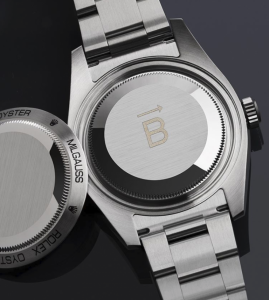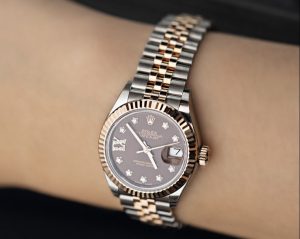
The first Rolex Explorer watch made its debut in 1953, in the wake of Sir Edmund Hillary’s historic ascent of Mount Everest, and has been a favorite of adventure-minded watch aficionados ever since. At this year’s Baselworld, Rolex unveiled the latest version of the Explorer, now boasting a dial with enhanced luminescence and the brand’s “Superlative Chronometer” movement.

The 2016 edition of the Rolex Oyster Perpetual Explorer (Ref. 214270, case, Ref. 77200, bracelet) features applied numerals, hour markers, and hands, made of 18k white gold and treated with Chromalight, an exclusive, long-lasting luminescent material that glows bright blue in low light. To further enhance the dial’s legibility, Rolex has added broader, longer hour and minute hands.
The watch’s satin-finished Oyster case measures 39 mm in diameter and is water-resistant to 100 meters (300 feet). It is composed of a case middle crafted from a solid block of particularly corrosion-resistant 904L stainless steel, a smooth steel bezel, and a fluted caseback hermetically screwed down with a special tool that allows only Rolex watchmakers to access the movement. The crystal is made of scratch-resistant sapphire. The watch boasts Rolex’s Twinlock double water-resistance system, in which the winding crown screws down securely against the case.
Secured inside the case is Rolex’s manufacture Caliber 3132, an automatic movement with 31 jewels, a 28,800 frequency and a power reserve of approximately 48 hours. The oscillator at the heart of the movement is outfitted with a blue Parachrom hairspring, made from an alloy manufactured and patented by Rolex, which the company says renders this vital component highly resistant to magnetic fields, uncommonly stable during temperature variations, and up to 10 times more precise than a traditional hairspring when subjected to shocks. The movement’s Rolex overcoil ensures its regularity in any position. The oscillator is held firmly in place by a height-adjustable traversing bridge and is fitted between high-performance Paraflex shock absorbers (another patented Rolex innovation) that promise a 50 percent greater resistance to shocks.
As for accuracy, Caliber 3132 meets the new “Superlative Chronometer” certification that Rolex began applying to its movements in 2015. This designation testifies that the fully assembled watch has successfully undergone a series of tests conducted in Rolex’s own laboratories, according to its own criteria, which exceed watchmaking norms and standards in terms of precision, power reserve, water-resistance, and self-winding efficiency. The fully cased movement must achieve a precision of −2/+2 seconds per day — more than twice that required by the Swiss testing agency COSC to designate a watch as an official chronometer. The “Superlative Chronometer” status is symbolized by the green seal that comes with every Rolex watch, along with an international five-year guarantee.
The new Rolex Explorer is fitted on a three-piece solid-link Oyster bracelet in 904L steel, with an Oysterlock safety clasp that prevents accidental opening; it also features the Easylink rapid extension system (yep, another patented Rolex invention) that allows the wearer to easily increase the bracelet length by approximately 5 mm. The price is $6,550. Scroll down to see some live photos of the new Rolex Explorer taken at Baselworld 2016.







